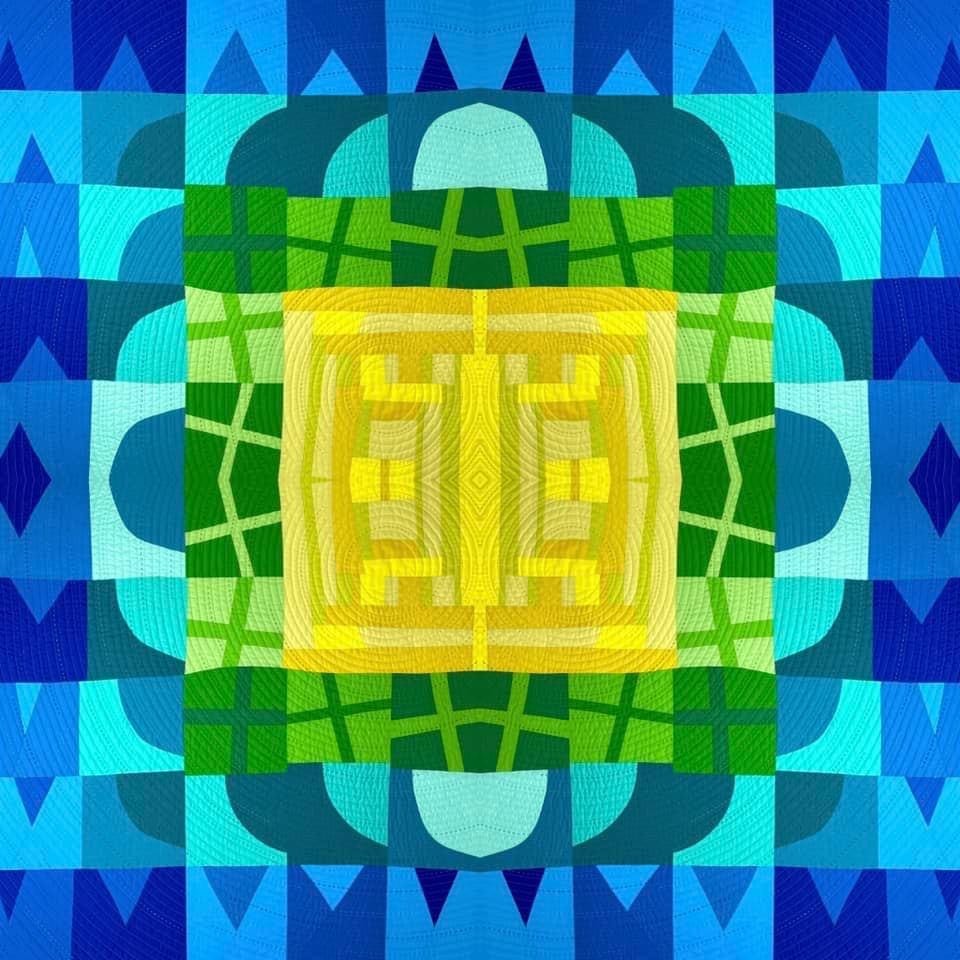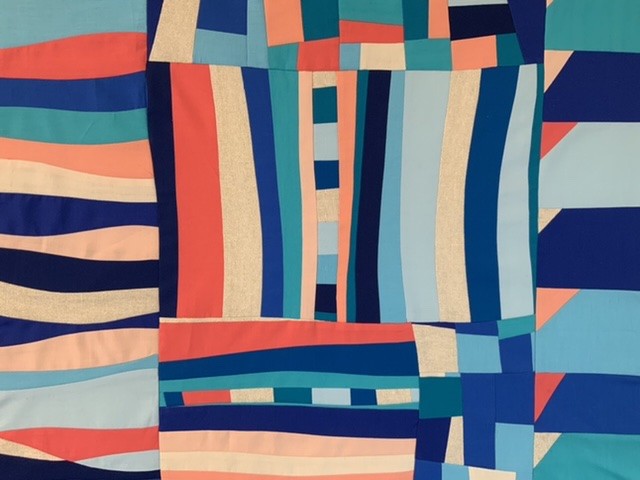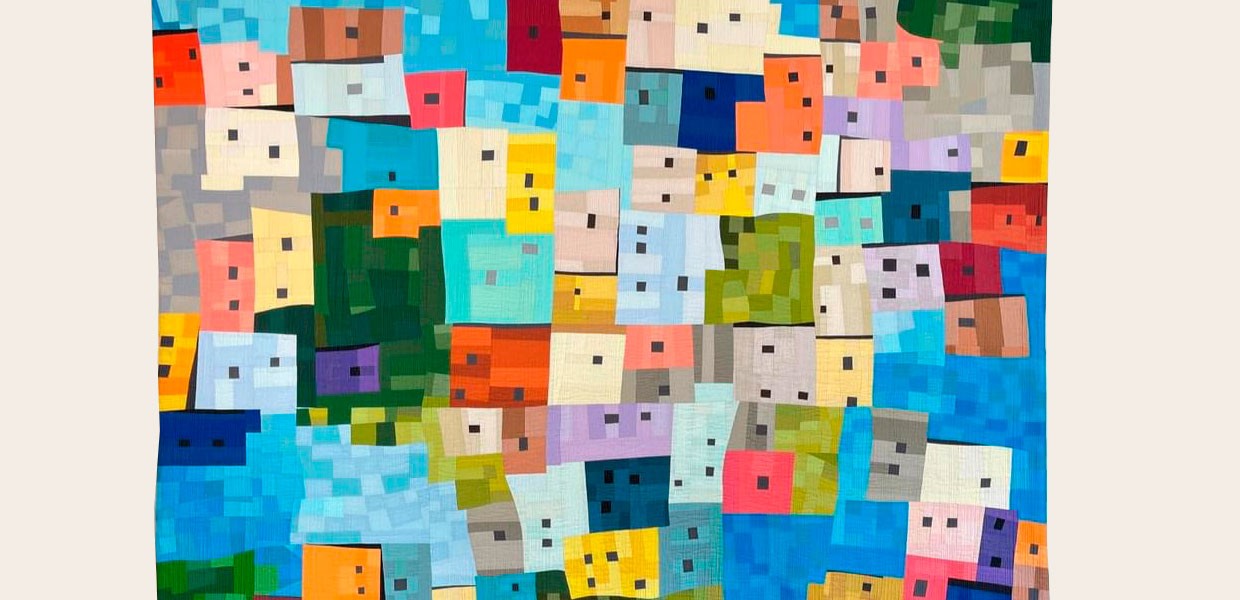Improvisational quilting is a beautiful art form. It allows you to spontaneously pick different colors and shapes to create a quilt on the spot, with no specific outcome in mind. Most improvisational quilting artists don’t have a specific design or goal in mind, they simply strive to create something that is new and unique to them purely in the moment. Often, it is possible to attribute the style and layout of the quilt to a specific quilter. Gwen Marston and others are great examples of this. At the end of the day, there are no rules to restrain your creativity when you begin the practice of improv quilting courses. You simply need some basic guidance as to where to start.
What Is Required For Creating an Improvisational Quilt?
The most essential materials that you will need for the Beginning to Improvise course are pretty straightforward. You should bring an open mind, excitement, and a need to live in the moment. In addition to yourself, you will need a straight-stitch sewing machine, a quarter-inch foot, a rotary cutter, fabrics, thread, a ruler, and an iron.
Getting Started: Choosing Your Color Palette
To understand how to pick a color palette, it is often helpful to consult color theory and a color wheel. When you mix certain primary colors, you will get secondary colors. For example, if you mix two primary colors, blue and yellow, you will get a secondary color of green. Red and yellow will combine to make orange, and red and blue will combine to make purple. There are also tertiary colors. When you mix a primary color and a secondary color, you will get a tertiary color. A great example of tertiary color creation involves combining orange and yellow to get yellow/orange.
Complimentary colors are colors that align with each other across the color wheel. For example, yellow’s complementary color is purple. How does color theory help you pick a color palette? If you choose your main color, and some of its lighter values to highlight it. The complimentary color will help you create an accent in your color palette. Lastly, you can choose a neutral color, such as white to add balance to your palette.
When you are choosing your color palette, it is helpful to lay the fabrics out in front of you so you will be able to see how they will look in real life.
The Improv Log Cabin: A Contemporary Twist On a Classic
In quilting, the log cabin is a tried and true traditional quilting approach. The log cabin approach simply entails different colored fabric strips that resemble the walls of a log cabin. Log cabin quilts may have originated during the Civil War in the United States where quilts were raffled off to win money for the war effort. It might have been called the “log cabin” approach because Abraham Lincoln grew up in a log cabin. With the log cabin approach in improv quilting, you can take your fabric colors, and make different sections, or log cabins of your quilt, to be put together. When you start working on your log cabin quilt, you can take some of your different “log cabins” and choose to work with the different colors of your palette. Here is an example that you could consider trying if you have “red” as a primary color that you use as the center of your sections:
- One section could have red as the center.
- Your different sections could have different color values of red (lighter or darker) in the center.
- Your different sections could also use different values of green, since it is the complementary color of red.

Going to Cut the Fabric To Start Your Improv Quilt
One of the techniques that you can use in your improvisational quilting approach is working with strips. It is very important that when you cut your fabric that it is well pressed, since this will allow you to cut the fabric evenly without a ruler. You can cut several different strips (two to three) of all your different colors before you go to start sewing on the quilting machine. When you cut, you don’t have to worry about if some of the strips are not even.
Throughout the improvisational process you will go between cutting the sewing machine, using a quarter-inch foot. As you work through our “Beginning to Improvise” course, you will learn some of the stunning ways you can create the different color combinations that create the beauty of your quilt and what you can do with the leftover pieces that you might not have thought of using.

Why Improvisational Quilting?
Improvisational quilting, simply put, frees you of all restraint when creating your quilt. Great musicians, like Mozart and Ellington, were great improvisers. Improvisational quilting allows you to create in the moment and to work on the process without worrying about results. When you create without a plan, it’s like a puzzle that you have to put together without the picture. There is not a right or wrong answer and your only goal when improvising is to create in the moment.
The only limits that you have on improvisation are the resources that you have on hand, such as your fabric, sewing equipment, and the time you have to create your quilt. If you are wanting to get started with improvisational quilting, go ahead and try our Beginning to Improvise course on our website.


